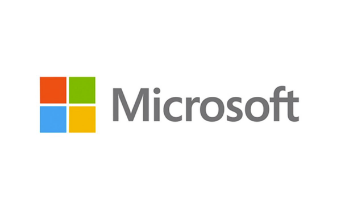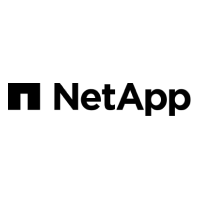Cloud Storage Gateways: Everything You Need To Know (FAQs)
How Does A Cloud Storage Gateway Work?
A CSG can be an on-premises piece of hardware or software and translates cloud storage APIs to block-based storage protocols. It acts as in interface or intermediatory that connects legacy storage with modern devices. They help to circumvent the need to change existing applications by using a common interface that can be applied network wide. CSGs provide data deduplication and compression features to transport and save data while ensuring low levels of latency. Other features might include encryption to protect data in transit and at rest, local storage caches, tiered storage, automated saving, and snapshots.
Does Your Business Need A Cloud Storage Gateway?
Many cloud storage providers tend to include CSGs within their product, though not all do and some need to be configured separately. CSGs are generally a necessity for organizations that are dealing with an incompatibility between their legacy storage systems and public clouds they’ve chose to migrate their data to. Organizations experiencing this problem can stand to benefit from implementing a CSG, especially large organizations that span multiple locations, networks, and devices and have a lot of legacy data in legacy storage silos needed to be transported. If you are currently, or considering, transitioning to the cloud, it is worth considering your CSG needs.
Why Is Cloud Storage Important?
We tend to accumulate data quicker than we realise. Every digital action can be logged and stored for some as yet unknown purpose. While lots of this data can be discarded, lots of it will be needed for regular business operations. Specific types of data may need to be retained for legal and regulatory purposes. HIPAA, for instance, stipulates that all medical records need to be retained for six years.
A dentist’s office may well see hundreds of patients in a month; all their data needs to be kept secure and for the prescribed length of time. There are additional expectations placed on financial data and Personally Identifiable Information (PII). All this data needs to be stored in line with specific requirements.
As more and more organizations migrate to the cloud, tools like cloud storage have only increased in demand. In 2022, as many as 89% of companies use a multi-cloud approach and 80% take a hybrid approach. In 2022, the global cloud market was valued at $545.8 billion, with this figure estimated to hit $1240.9 billion by the end of 2027–making that a compound annual growth rate of 17.9%.
What Are The Benefits Of Cloud Storage?
Cloud storage is an important aspect to consider when considering fully migrating to the crowd or for implementing a flexible, infrastructure-light approach to data storage. In this section, we will explore the key benefits of utilizing cloud storage within a work environment.
Cost Effectiveness
Cloud storage solutions are cost effective ways of keeping track of your data. On-premises solutions tend to have lots of hidden costs that include purchase, installation, configuration, and management. These costs are all repeated when expanding storage capacity.
Cloud storage solutions, on the other hand, can offer a more flexible approach and are often cheaper. This type of storge tends to work on a subscription model, meaning that you only pay for the storage that they actually use. If your storage requirements decrease over time, this will be reflected in your subscription cost. One of the reasons why this type of solution is cheaper is due to economy of scale – you do not need dedicated staff or infrastructure in-house, data centres will manage all of this.
Data Management
Admins can use cloud storage lifecycle management policies to plan, automate, and improve data management strategies. This can include automated tiering and ensuring that data storage adheres to specified compliance requirements. These tools also ensure that you can keep track of how data moves and monitor who accesses it. Data can be managed to support use cases, enforce security, create cost efficiencies, and achieve compliance standards.
Fast Deployment
Cloud storage units and accounts can be set up in minutes, with additional storage space added quickly. Not only does this save admins time when setting up, it makes management and retrieval more streamlined too. Faster access to resources overall improves and increases agility, having a positive impact on worker productivity.
Business Continuity
Data centers used to store vast swathes of business data are obvious targets. This is common knowledge. Because of this, data centers implement high levels of security to protect data. Not only does this encompass cyber-attack, but also natural disasters and technology failures. Many providers will store data in multiple locations so that even if one centre is offline, you will still be able to access your data. It is worth checking who is responsible for data security as many providers will not accept responsibility, even if they do implement their own security measures.
Data Backup And Recovery
We all know that data should be backed up so that I can be recovered in case it is lost or corrupted for any reason. Cloud storage takes the stress out of this with many providers allowing you to set up automatic and scheduled backups.
Sharing And Access Is Simplified
Cloud storage enable teams to work with greater efficiency. As information is shared through the internet, cloud storage can be accessed by any (authorised) user from any device, anywhere in the world. Some cloud storage providers also enable real-time collaboration, meaning that teams can easily work together on files and make changes to them. As data is centralized in one frequently updated repository, there is no need for devices to be synced. Users are also able to access data and files when they’re outside the office–something particularly beneficial for organizations with a high number of remote or mobile workers.
Scalability
One of the issues with on-premises storage solutions is that capacity is limited. While you can add additional storage, this requires additional infrastructure and resource. To avoid having to be spartan with the data you store, you can easily add additional storage to cloud solutions. The efficiency of this means that analytics, backups, cloud applications, and data lakes can quickly be accommodated, and users can access this data easily without waiting for additional hardware or onboarding storage. Most vendors allow companies to reduce and increase the amount of storage space needed, altering prices to reflect these changes.
Top Cloud Storage Features To Look For
Every cloud storage provider will present a whole host of reasons and features encouraging you to use their solution. It can be difficult to work out which solution is most appropriate for your needs. In this section we’ll break down the key features that you should look out for when considering a cloud storage solution.
- Automatic Syncing: Any changes made to a document will be automatically logged and stored in the data center. The more often this happens, the less data that has the potential to be lost. Admins should be able to customize which specific folders, files, and data should be synced, and if earlier versions are overwritten, or changes are stored in addition.
- Backup And Recovery: File recovery and restoration is an essential feature of cloud storage tools. Good solutions will allow users to retrieve lost, misplaced, or deleted files and be able to back up devices.
- Server Locations: As this data is stored in “the cloud”, it might not seem important where servers are based. However, the physical location of a data center could affect latency, regulation, and latency. Data centers located far away may be slower to access than those nearby.
- Encryption: Encryption is a vital feature in making sure that data stays safe while at rest and in transit. Most cloud storage providers use TLS to encrypt files in transit and then AES-256 encryption for storage. Some providers offer zero-knowledge encryption – this means that only the data owner is able to access the data, not even the provider. While this is more secure, in some cases the provider is unable to recover data if the admin forgets their master password.
- Access Controls: Access control is one of the leading causes of data loss and breaches. In practice, this is someone in your network having more access than they require to do their job. Data is a valuable asset, and you should be cautious about who is given access to it. Your provider should offer access control policies that can be applied specifically and easily revoked.
- User Friendly: To ensure that users are able to save and access files easily, it’s important that your solution’s interface, navigation, and tools are straightforward and user friendly.
- App Integrations: Integrations with work-critical apps enhances workflow and improves productivity. This allows users to connect and share work – provided that they are authorised to do so. App integrations with popular app providers make it easier for users to do their work, create files, and communicate, while ensuring that data is stored appropriately and safely.
- File Requests: Teams can use file request features to submit work for review or send documents for signatures when required.
- Document collaboration: Some vendors allow real-time collaboration on saved documents. This allows teams to collaborate easily, ensuring that they are working on the most recent document version. It also allows them to see their collaborator’s changes in real time.
Organizations may look to further their cloud security measures through dedicated cloud data security solutions. For more on those solutions, including information on the best solutions currently on the market, you can read our article here:
Disadvantages Of Cloud Storage
While there is a broad range of useful benefits to cloud storage – it is something we would recommend that all organizations implement – it is worth considering some of the disadvantages and points to be aware of.
- In storing data with a third-party, you, necessarily, give up a degree of control. While providers will try to maintain transparency regarding how your data is controlled, it is out of your hands. You must trust your provider to store your highly confidential information.
- Organizations are not able to control and oversee their data and cannot customize the storage architecture, which might be a problem for organizations with specific and complex storage needs.
- It can be unclear who is responsible for data security, should something go wrong. Most vendors are unwilling to accept liability for your data. This means that you need to understand the provider, and ensure you are working together.
- There may be practical issues in switching vendors once a contract has been signed and your data transferred. Moving large amounts of data is complex and costly, so if you need to change providers, migration could be difficult.
- And finally – perhaps not a disadvantage, but something to keep in mind – what happens if your internet connection is down? Without an internet connection, your employees will be unable to access the stored data. If this is a recurring problem, they may begin to store files locally, thereby opening up a host of other risks.
Summary
Cloud storage is a straight forward and effective way of safely storing our data. It is easy to upload and easily retrieved when needed. Cloud storage has a wealth of benefits including enhanced reliability, scalability, flexibility, and reduced costs. Cloud storage is important for organizations of all sizes, especially for companies with disparate, remote users, and wide network edges. Cloud storage solutions are much more flexible than on-premises solutions – they can easily scale as your organization grows and expands into new territories.
Overall, cloud storage is a flexible alternative to those that need it. It offers a good level of targeted and expertise security through features like data encryption. If that’s not enough – cloud storage is often more cost effective than an on-premises solution–something not every organization can do themselves.
To ease the transition from on-premises, hardware solutions to cloud and software technologies, network virtualization solutions can be of use. Virtualization allows infrastructure to be created digitally, allowing for further flexibility and customization.













